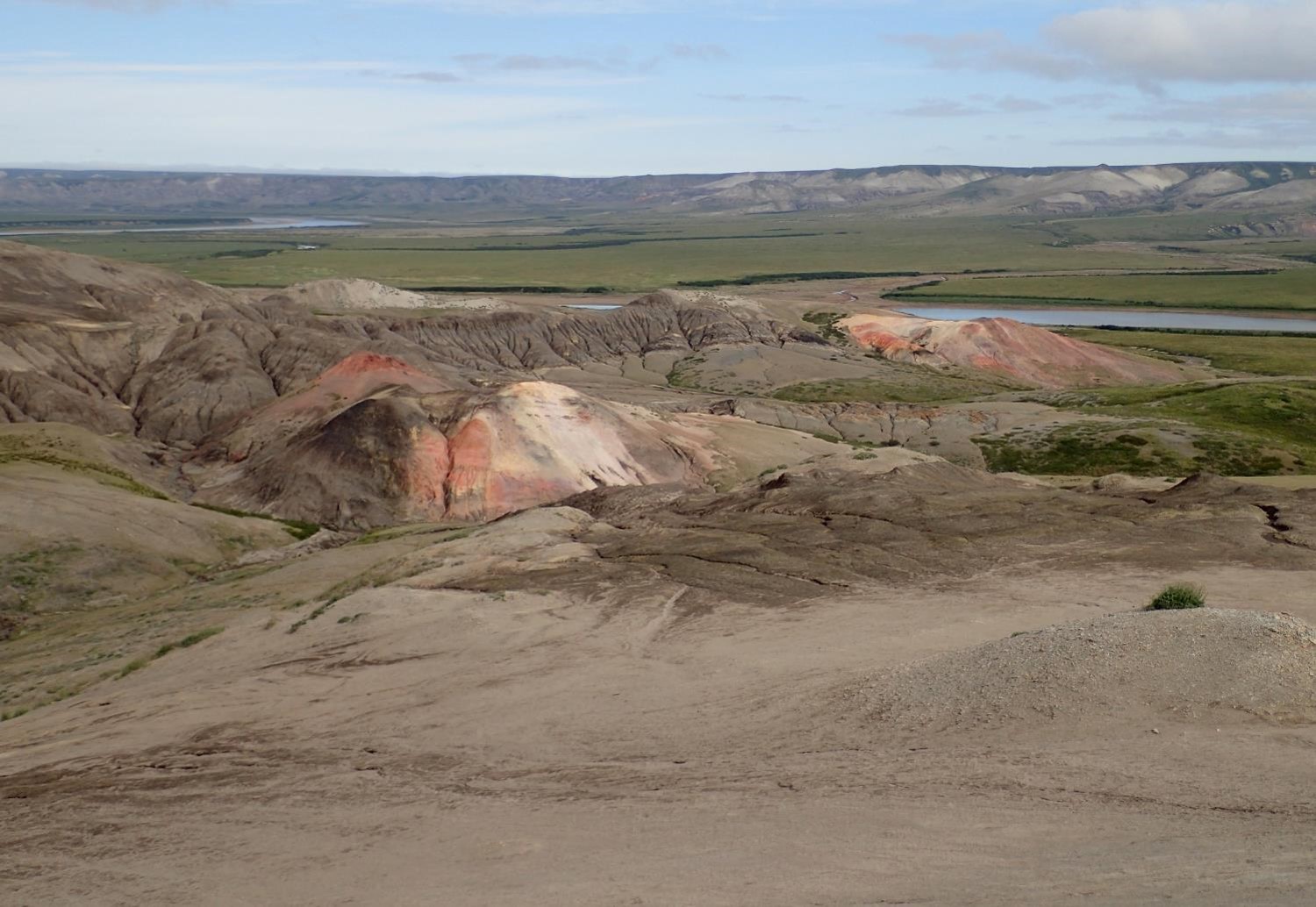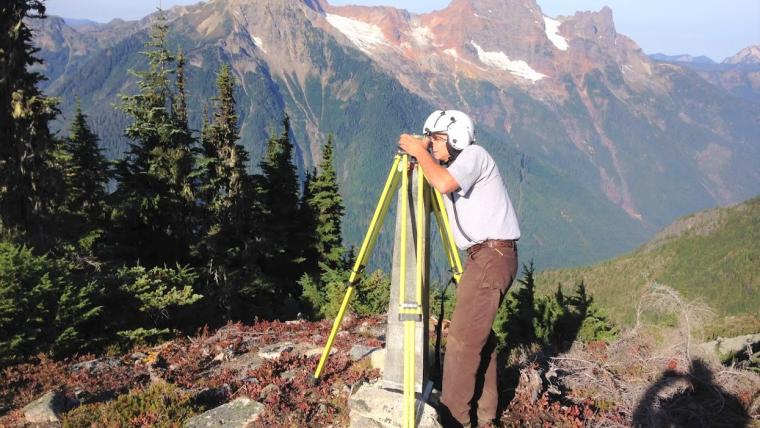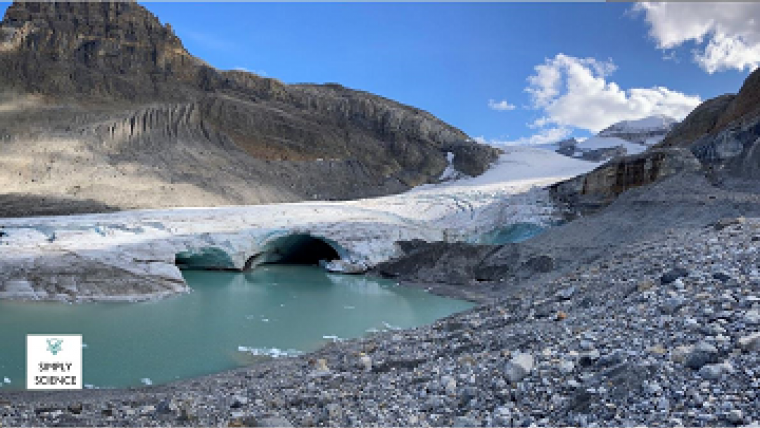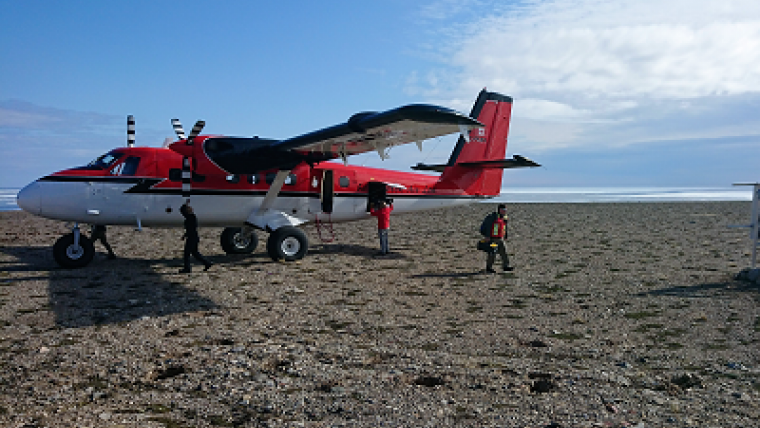New geological research in Canada’s Arctic provides clues about life on Mars
A unique geological formation in Canada called the Smoking Hills — because it is literally smouldering — provides signs that Mars may have been a more habitable environment than commonly believed.
April 2022
Stepping carefully through gooey sticky black mud, Geological Survey of Canada research scientist Steve Grasby is digging through layers of smouldering sediments at a site called Smoking Hills. Each layer marks a point in time, giving him a window into what the ocean chemistry was like at the time and revealing periods of volcanic activity, ice ages and other chaotic events. Usually his findings reveal long periods of stability, but Smoking Hills was, and still is, a bit of a scientific mystery.
The sea cliffs of Franklin Bay showing several locations of active burning shale with clouds of billowing smoke.
First the backstory
The Smoking Hills is a dramatic sea cliff on the edge of Canada’s north Arctic Coast. It’s literally smoking and smouldering and has been for thousands of years. It also happens to be one of the most toxic places on the planet. It’s riddled with hyper-acidic sulfuric ponds, smoking rocks and air so thick with sulfer dioxide that gas masks are required. The ground temperature is so hot, Steve has to be careful his thermometers don’t break and his boots don’t melt.

Scientists have to wear protective equipment because of the clouds of hot sulphuric acid and the acid metal-rich water. The red colour comes from the extremely high metal content.
But Steve’s research suggests this hasn’t always been the case. At one point, this area wasn’t smoking at all — it was a healthy, pH-neutral marine environment, teeming with life. It became clear to Steve that the Smoking Hills were formed before the region turned acidic. He was quick to make a connection to similar geological formations millions of kilometres away. “Conditions on Mars might not have been as negative as people have thought,” says Steve. “It could have been a much more amiable environment than is currently modelled.”
“So what we are seeing here on Earth — similar layers — we know they were formed in normal marine conditions, thriving with life,” explains Steve. “If smouldering mudstones found on Earth were deposited in near-neutral pH waters amenable to supporting life, maybe it’s the same story for Mars.”

As permafrost melts it starts to slump, exposing pyrite-rich shale to oxygen. This starts the oxidization process, which causes the shale to ignite. After burning and cooling the shale turns red and brittle.
More questions than answers
“Like any good science project, this one raises more questions than it solves,” he says. Scientists understand what they are seeing at the Hills, but they still don’t fully understand how it got this way. Scientists don’t know why the rocks started to smoulder centuries ago.
And also like any good science project, it’s wise to keep an open mind. Steve first came to the Hills with a plan to discover exactly what minerals this formation contains. He was curious if there were rare or valuable critical minerals. So making a connection between the Smoking Hills and Mars was unexpected.
“We were surprised; we dug and we dug and we dug into this geological unit, and it was all jarosite,” Steve recalls. Jarosite is a brittle, yellow-brown iron sulphate compound found in acidic ponds and in bedrock. It’s fairly rare on Earth. “What’s interesting is that we see very similar formations on Mars,” says Steve. The mineral was first spotted on Mars in 2004 when the NASA Opportunity rover rolled over fine-grained layers of it. Subsequent missions confirmed that there is indeed an abundance of jarosite on the red planet.
Steve’s research has implications for scientists the world over studying Mars, looking for signs of life. NASA rovers are gathering rock samples, but it will be at least 10 years before these samples find their way to Earth. However, a member of the U.S. Geological Survey has access to Mars Rover technology here on Earth, a high-powered spectrometer with X-ray beam technology. Scientists already know what a Mars Rover might see or measure in jarosite found on Mars. What if scientists used the same technology to analyze sediment samples found here on Earth?

Old burning sites show red and yellow shales that have been altered after being exposed to heat.
The more we know, the more there is to learn…
There is so much more to learn about the Smoking Hills. Indigenous people knew about the Smoking Hills for centuries, long before early Mackenzie River explorers in the 1800s provided the first written record of the formation. Now it will be up to 21st-century science and technology to help unravel the ancient mystery and make connections to life on planet Earth, and maybe even to life on Mars.
For more information:
Read:
Page details
- Date modified:


